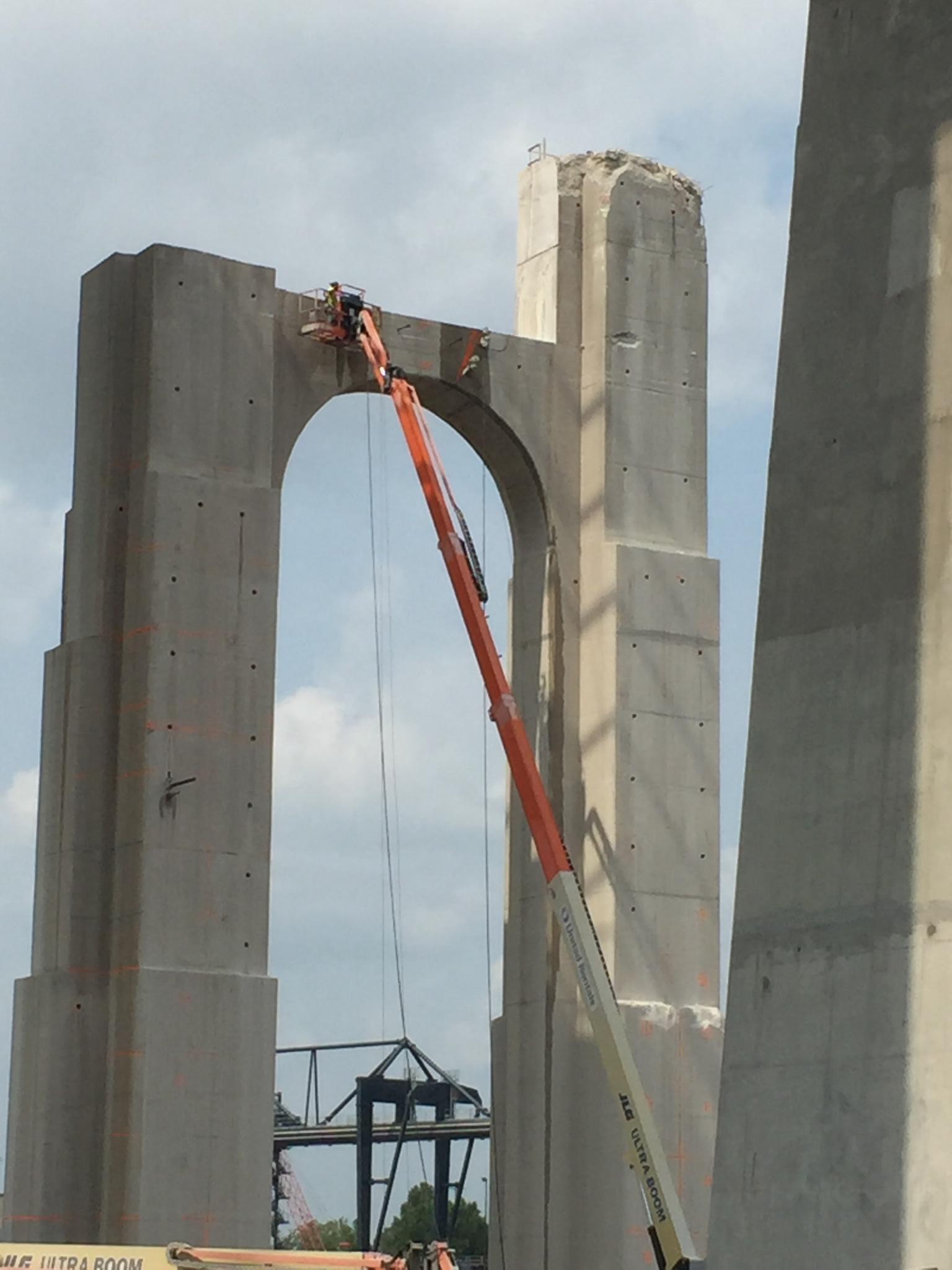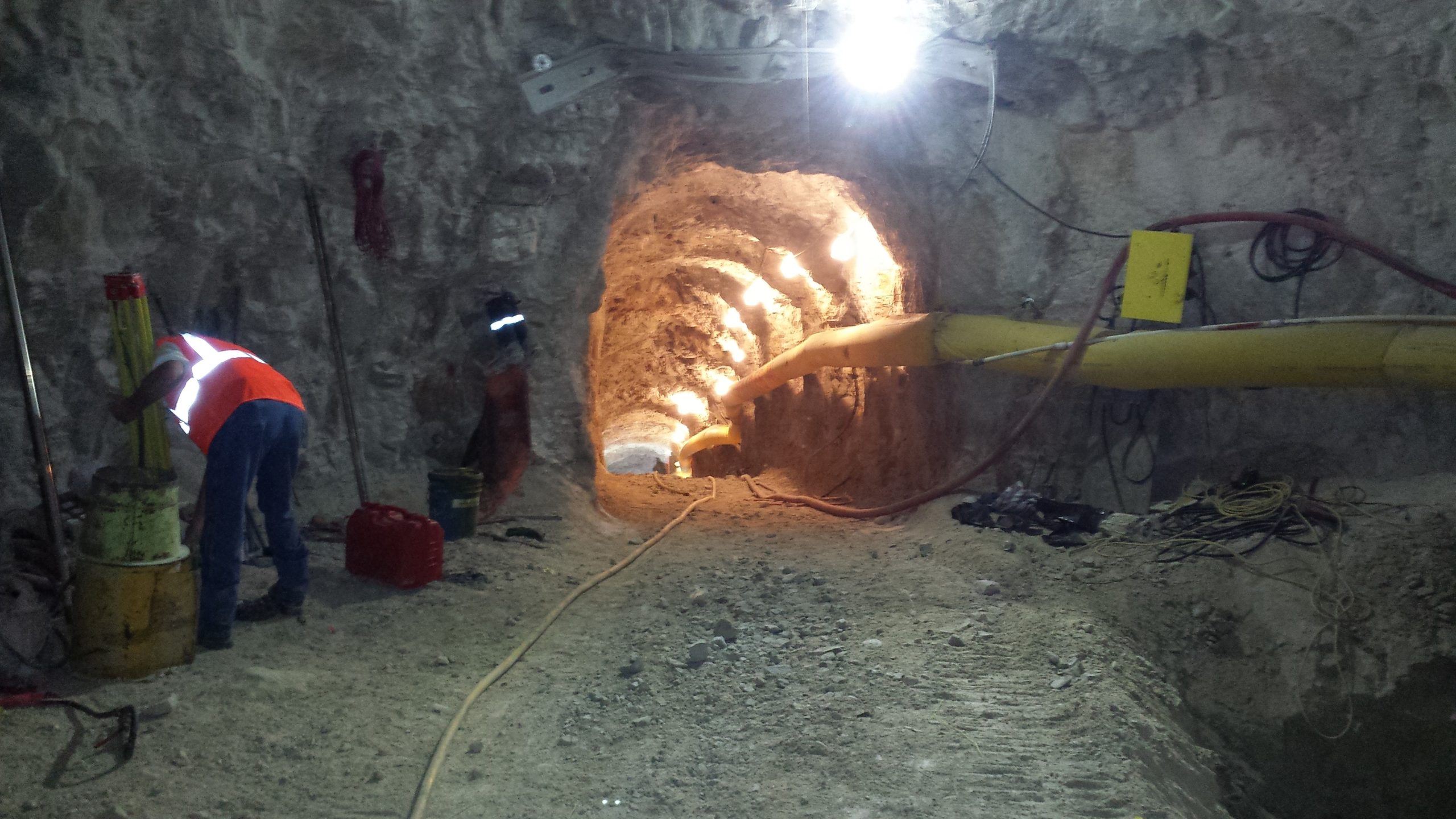
90-Year-Old Link Between New York and New Jersey Broken


J.P. Hogan professional wire sawing the bottom of the pier.
The Goethals Bridge opened 90 years ago on June 29, 1928 to accommodate increased interstate automobile traffic following World War I. It is one of three critical Staten Island bridges linking New York and New Jersey. It was named in memory of Major General George Goethals who was the construction manager of the Panama Canal and the first consulting engineer for the Port Authority of NY & NJ.
After its long history of service connecting Elizabeth, NJ with Staten Island, NY, the Goethals Bridge had now become functionally obsolete. The original bridge had 10-foot-wide narrow lanes that are substandard to the current use of 12-foot-wide lanes. The 1928 bridge design also lacked roadway shoulders, provided no access for pedestrians or bicyclists and seismic protections were not part of the design.
The Port Authority decided that a replacement bridge was needed to avoid the hundreds of millions of dollars that would have been required to maintain the old cantilever bridge span. In 2013, the Port Authority authorized the $1.5 billion project to build a pair of cable-stayed bridge spans to replace the single cantilever bridge. Building of the first span began in 2014. The demolition of the original bridge began in 2017 once traffic was switched to the first of two cable-stayed bridges to the south. The second span of the new bridge was built right next to the old Goethals Bridge, and demolition was required to complete this phase of the next bridge span.

This pier was partially chopped, then wire sawed before it was pulled over.
The general manager for the bridge demolition work was R.E. Pierson Construction. They required a contractor to provide a substantial amount of saw cutting to facilitate the demolition of the old bridge deck, sidewalk and parapet wall structures. “We used J. P. Hogan Coring & Sawing for our road saw cutting, coring and wire sawing associated with the demolition of the Goethals Bridge between Elizabeth, NJ and Staten Island, NY.” according to Frederick L. Stuart III, P.E., Construction Manager, R.E. Pierson Construction of Pilesgrove, NJ.
Sawing and drilling with diamond tools offered many benefits for this project, including maintenance of structural integrity, reduced downtime and the ability to cut heavily-reinforced concrete. These factors played a major role in the demolition of the existing Goethals Bridge with its arch pier superstructure. A critical factor was to not damage the new bridge or the surrounding structures, and using diamond cutting would help achieve that.
J.P. Hogan cut many of the larger concrete sections into pieces for removal by R.E. Pierson with their crane. Others sections were simply core drilled and wire sawed so they were able to be pulled over out of the way by R.E. Pierson.
The piers had to be safely dropped to the ground, and the only way to effectively do that was through the use of a diamond wire sawing of the vertical structural rebar. J.P. Hogan drilled two-inch diameter wire pull holes with a Shibuya Core Drill R2531 through up to 23-foot thick reinforced concrete at heights of up to 130 feet. Five inch diameter lifting holes were also drilled through up to 23 feet of reinforced concrete at those heights. In the end, up to 330 square feet of horizontal pulls on each pier were made by the cutting contractor.
The selection of the right diamond tools is always critical and the expertise of a seasoned CSDA cutting contractor often makes a tremendous difference in the performance and success of the job. Such was the case with the large steel reinforced piers and the challenge to select the optimum diamond wire to efficiently work with this large amount of steel. A Hilti DSW 3018-E high power (30 kW) electric wire saw was utilized to pull from the ground all the way to a height of 130 feet. This required spinning a length of 300 feet of diamond wire. The initial diamond wire selection proved to be less than ideal, and adjustments were made identifying a different wire specification that was able to boost production by 30 to 50 percent.

Cables attached to the top of the pier in order to pull it down.
Other environmental concerns presented challenges to satisfy the requirements set forth under the U.S. Department of Transportation Federal Highway Administration’s National Environmental Policy Act (NEPA) requirements. This impacted the demolition of Pier C which was in the water, as J.P. Hogan was not allowed to drop any cut pieces of concrete into the water. Operating the wire saw over water therefore required a platform built in the water, allowing operators access to the pier with their track wire saw. This was a challenging feat, but the J.P. Hogan professionals met the challenge to get the job done.
Training and certification of the operators was a requirement for this project. All of the J.P. Hogan operators had to have high-reach certification to use the JLG ultra boom lift for this demolition. They also needed fall protection and prevention training as required for this project.
J.P. Hogan completed the demolition of approximately a dozen arch piers in both NY and NJ that required 20,000 square foot of wire sawing. They supplied sufficient amount of trained professionals seven days per week on three shifts per day. Two wire saw crews worked the first and second shifts while two core drill crews were on the third shift. This level of support allowed them to successfully complete the work on schedule and on budget.
“The demolition of the 7,500 foot long bridge took approximately 18 months to complete and J.P. Hogan with their state of the art equipment and a team of highly trained employees were able to solve even the most complex sawing and coring challenges. It was a pleasure working with J.P. Hogan and we look forward to future opportunities to work with them!” stated Frederick L. Stuart III, P.E.
Once again, a CSDA cutting contractor has demonstrated the benefits of utilizing sawing and drilling diamond tools in the hands of professional operators to offer the construction industry the ability to lower total project costs, while providing the capability to work in limited access areas to remove challenging concrete structures.
Company Profile
J.P. Hogan is a full service concrete cutting company providing angle sawing, core drilling, curb cutting, road sawing, wall sawing, wire sawing, GPR concrete scanning, robotic demo and grinding/grooving. The company has been in business for over 20 years and a member of CSDA since 2006. Headquartered in Staten Island, NY with 40 employees, they are DBE/WBE certified contractor.
RESOURCES
General Contractor
R.E. Pierson Construction
Pilesgrove, NJ
www.repierson.com
CSDA Cutting Contractor
JP Hogan Coring & Sawing Corp.
Staten Island, NY
Jack Hogan
Tel: 718-761-7014
Email: jack-hogan@888jphogan.com
www.888jphogan.com
Methods Used
Wire sawing, slab sawing, wall sawing and core drilling













